
© 2024 | All Right Revered.
Do you feel overwhelmed by complex tech terms?

Marketing & Outreach Associate
Fueling brand growth with a blend of creativity and strategy.
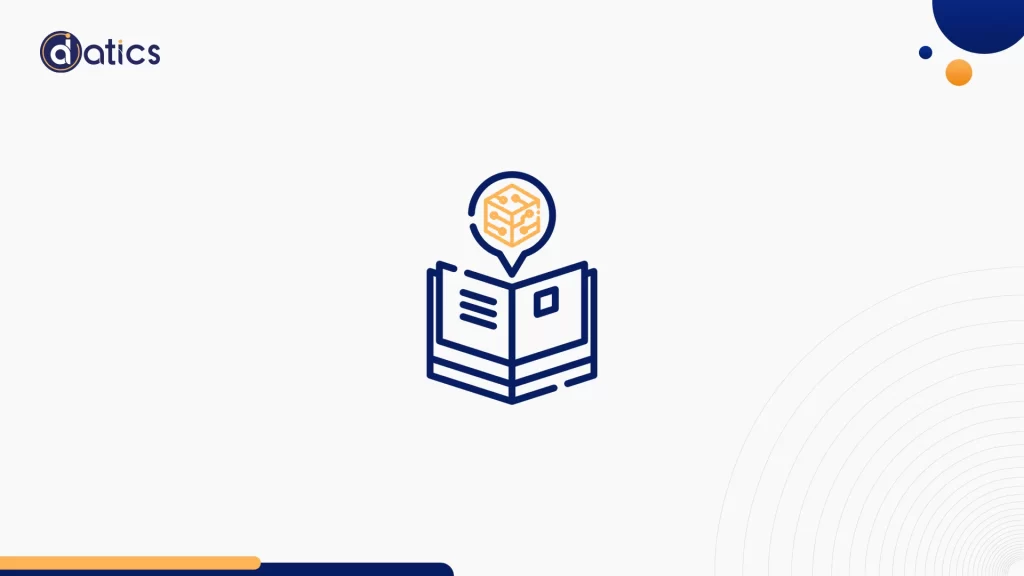
Have you ever felt completely lost in a conversation when tech terms like GenAI, Blockchain, and Big Data are thrown around? Well, you’re not the only one. As a newbie, navigating through the world of all these tech terms feels no less than cracking a code. However, you don’t need to worry because this blog has got you covered.
Let’s crack down the 12 most popular tech terms that everyone’s talking about!
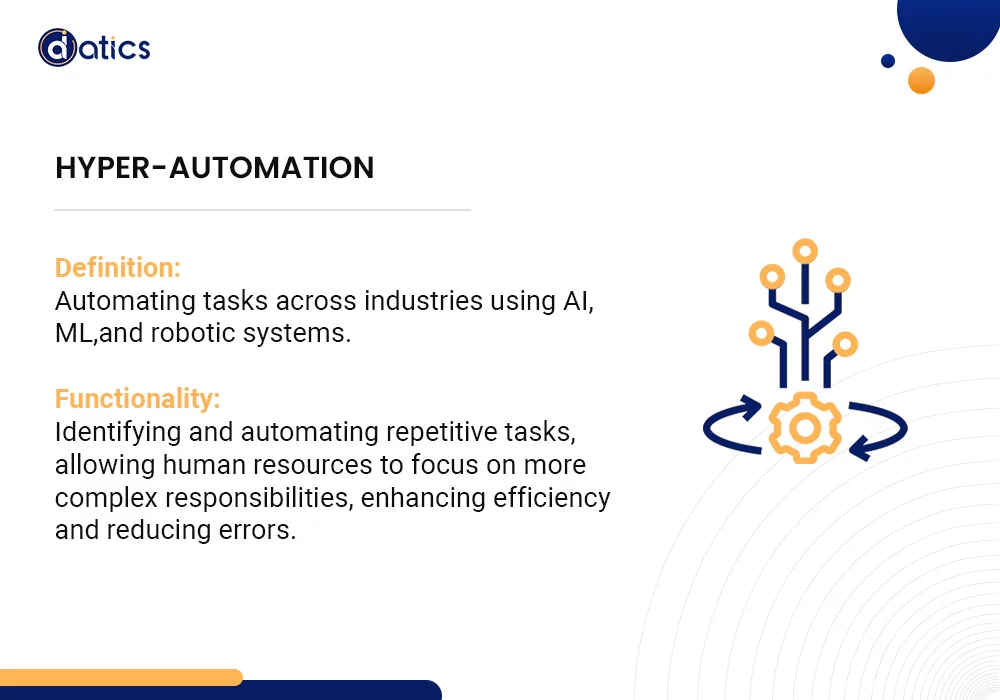
Let’s start off with my favorite tech term; Hyper-automation. Hyper-automation stands as a comprehensive method to automate feasible tasks within business operations, utilizing a mix of artificial intelligence (AI), machine learning (ML), and robotic systems. Its application spans multiple industries, including insurance and healthcare, streamlining complex processes. For instance, in insurance, it optimizes file and claim handling, cutting down on manual work and expediting workflows. Similarly, in healthcare, it aids in interpreting radiology scans, leading to quicker and more precise diagnoses of medical conditions.
The strength of hyper-automation lies in its capacity to identify and automate repetitive, rule-based tasks, allowing human resources to focus on more valuable responsibilities. This approach isn’t confined to one industry but rather represents a transformative strategy aimed at boosting efficiency, reducing errors, and fostering innovation across diverse business domains. It marks a shift towards streamlined operations and improved outcomes, ushering in a new era of productivity and progress.
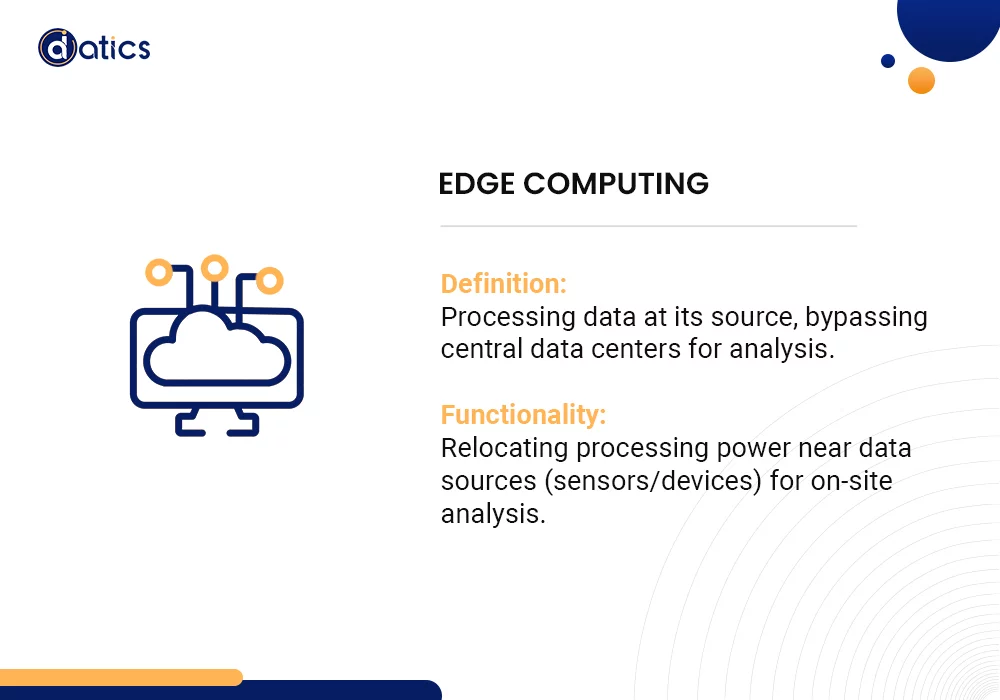
Edge computing is centered on processing data right where it originates, sidestepping the conventional process of sending it to a central data center for scrutiny. This technique eases the strain on the internet, which struggles with the load of data transfers. Instead, edge computing shifts the processing power to the data’s location, often close to sensors or devices. Here, the data gets analyzed on-site before selectively relaying processed insights back to the central hub.
This strategy is a direct response to the mounting pressure caused by the sheer volume of data produced by numerous devices and sensors. By dispersing computation and analysis, edge computing streamlines effectiveness and reduces delays. The nearness of computational capabilities to the data origin diminishes transmission lags, making it a perfect fit for scenarios demanding immediate responsiveness, like IoT setups, self-driving vehicles, or remote monitoring systems.
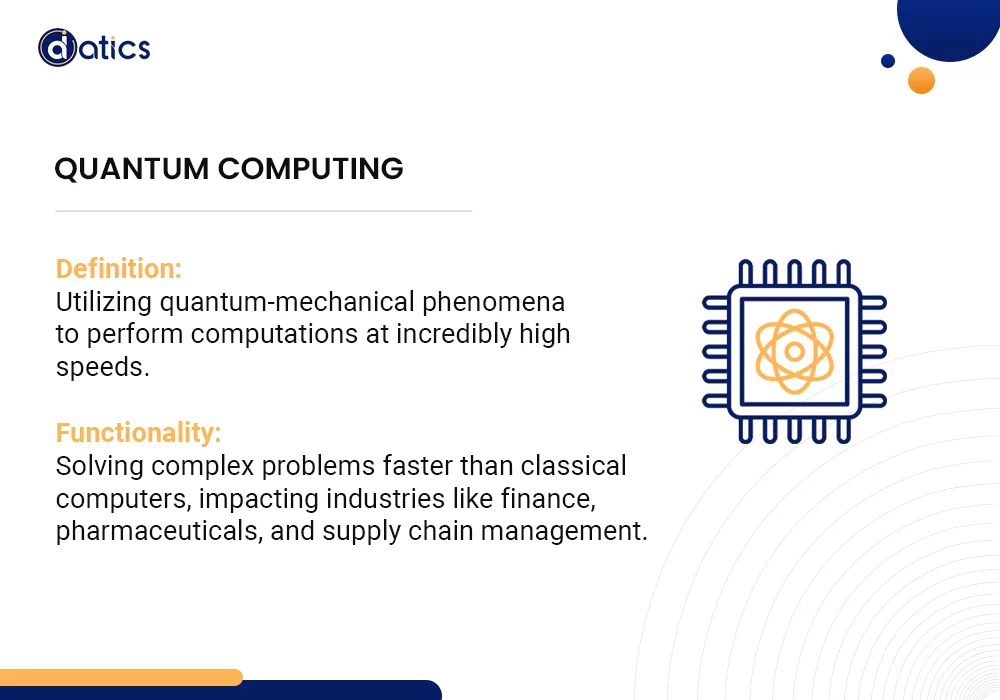
Quantum computers possess the remarkable ability to process specific calculations at an astonishing speed. For instance, tasks that would demand a staggering 10,000 years using the present top 500 supercomputers might be accomplished by a quantum computer in less than 8 hours.
Industries such as financial services, pharmaceuticals, and supply chain management are anticipated to reap significant advantages from this technological leap. These sectors stand ready to leverage quantum computing’s potential for accelerated computations, potentially revolutionizing their operations and efficiency.

Also known as 5th generation wireless technology or mobile network, this advancement boasts speeds that are a hundredfold faster than its predecessor, 4G, while accommodating connections to a thousandfold more devices. Its potential lies in its ability to link with embedded sensors, making a profound impact on the Internet of Things.
Looking ahead, 6G, the anticipated 6th generation wireless technology, is forecasted to surpass the swiftness of 5G by a hundredfold. Though still in the conceptual phase, the journey from the initial 1G technology in the 1980s signifies significant progress in the realm of wireless communication.

A digital twin is a digital copy of a physical object or system, essentially creating a virtual version of something real. It allows us to use past, current, and predicted data to make plans for boosting efficiency and productivity. By combining data from different timeframes, digital twins let us explore different scenarios, which helps us make operations more effective and improve how things work.
They work like active models, giving us insights into how the real objects or systems behave, what maintenance they might need, and how we could make them better. This tech term has the potential to transform industries by giving us a deeper understanding of how things function, leading to smarter choices and fresh innovations.

The metaverse marks a significant advancement from today’s flat 2D web, introducing a more immersive, spatial, and three-dimensional digital space. It merges the physical and digital worlds, creating a seamless interactive environment that expands beyond conventional web browsing. This evolution revolutionizes our online experiences, drawing users into a diverse universe of interactions. Embracing a more immersive environment enhances our engagement with digital content, fostering deeper connections and interactions.
With 3D elements integrated, the metaverse becomes a dynamic platform for exploration, creation, and interaction, resembling and extending our real-world experiences. This blend of physical and digital realms holds potential to reshape our internet encounters, opening doors to inventive ways of socializing, entertaining, and collaborating.
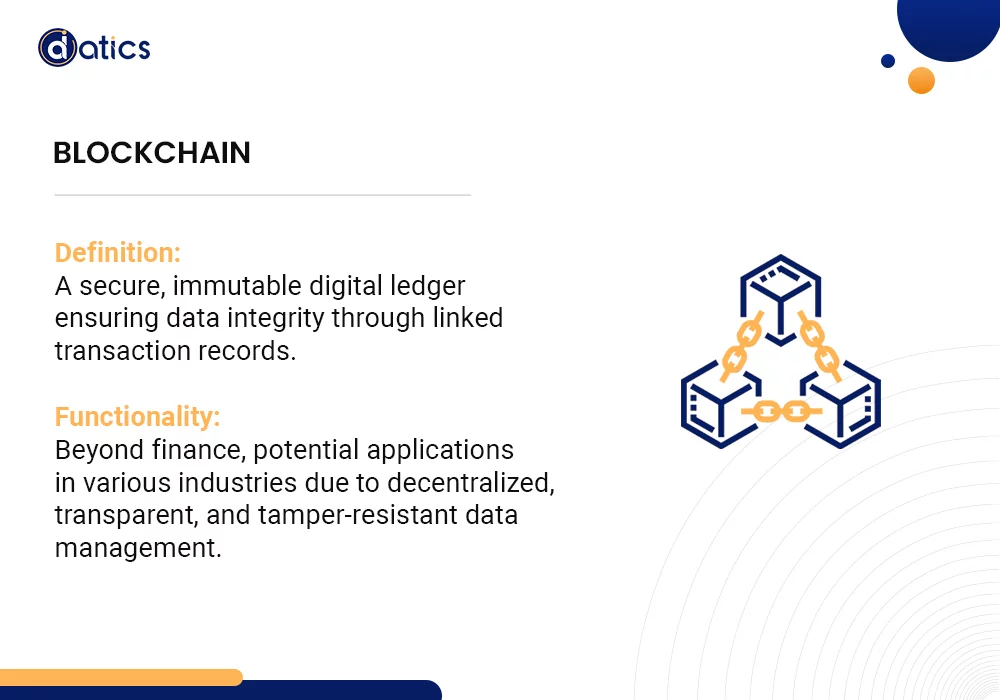
Blockchain, a highly secure digital ledger, serves as an unchangeable record of transactions. It consists of blocks of data linked together, with each block holding digital transaction records. These blocks form a continuous chain in chronological order, ensuring a sequential flow of information. Its key strength lies in its resistance to data alteration or deletion, ensuring its integrity. However, without additional privacy tools, the ledger’s contents are transparent to users.
This tech term presents a groundbreaking way to manage records and transactions, providing an incorruptible system that maintains data reliability. Its decentralized nature and robust security measures offer potential applications in various industries, not just finance, promising improved efficiency and trust in digital transactions.
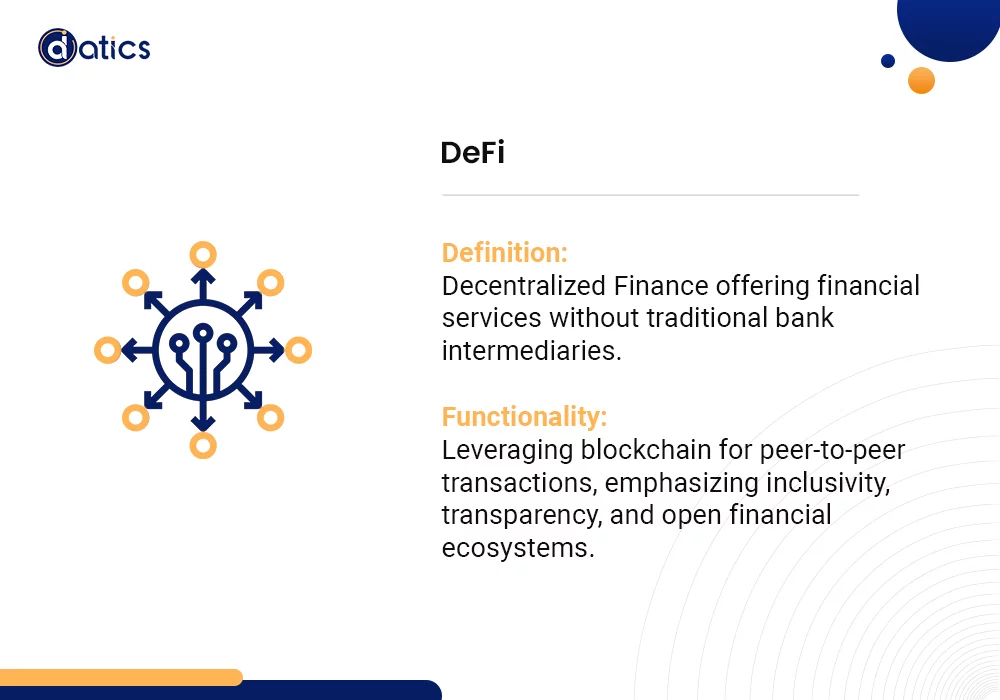
Decentralized Finance, often abbreviated as DeFi, grants users access to a wide range of financial services—such as lending, borrowing, trading, and payments—without dependence on traditional banks or intermediaries. It’s comparable to paying a café directly for your coffee rather than using a card and waiting for bank processing. DeFi functions beyond the realm of conventional banking, highlighting peer-to-peer transactions made possible through blockchain technology.
While closely associated with cryptocurrency and the growing market of Non-Fungible Tokens (NFTs), DeFi introduces a disruptive approach to financial operations, fostering a more straightforward, transparent, and open financial environment. Its core revolves around utilizing blockchain’s decentralized structure to provide financial services that are more inclusive, efficient, and accessible worldwide, potentially transforming established financial norms.
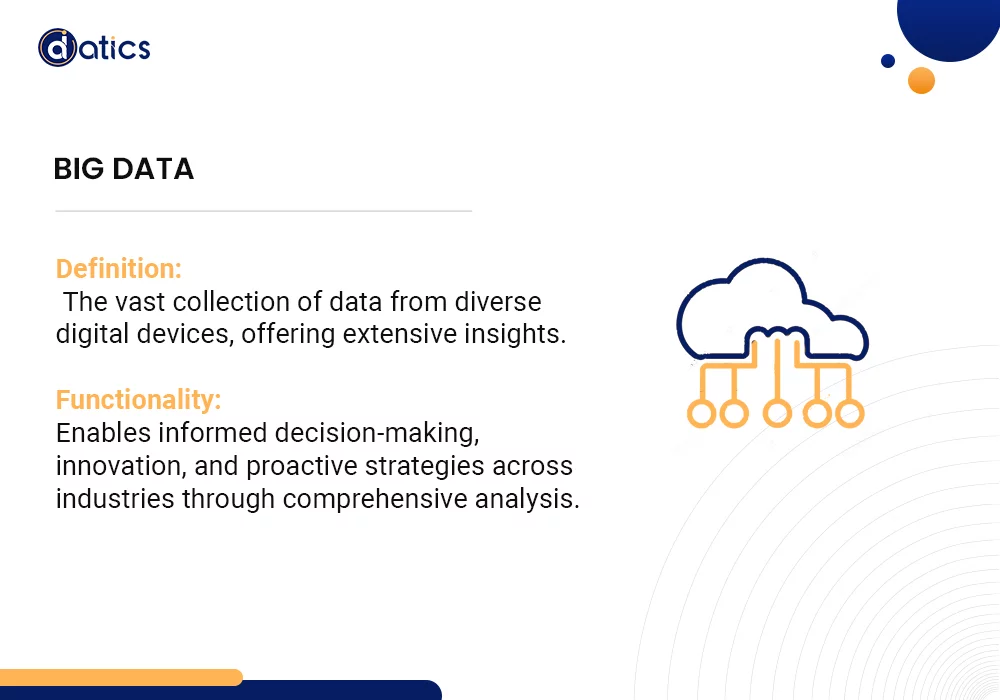
Big data refers to the exponential growth in the generation and gathering of data from various digital devices. Virtually every digital device, ranging from thermostats to light bulbs, contributes to this data pool.
Businesses have the opportunity to gather and scrutinize this data to aid in diverse aspects such as product enhancement, customer service enhancement, operational streamlining, and beyond. The scope of data collection spans across a vast array of sources, continuously expanding as technological advancements introduce newer devices and connectivity. This influx of data presents businesses with invaluable insights, enabling informed decision-making and proactive strategies across multifaceted domains.
The potential applications of this tech term extend far beyond traditional concepts, influencing innovation and driving efficiency in a multitude of sectors. As the digital landscape evolves, the proliferation of data sources continues to amplify, underscoring the significance of harnessing and interpreting this wealth of information for continued growth and adaptability in the modern era.
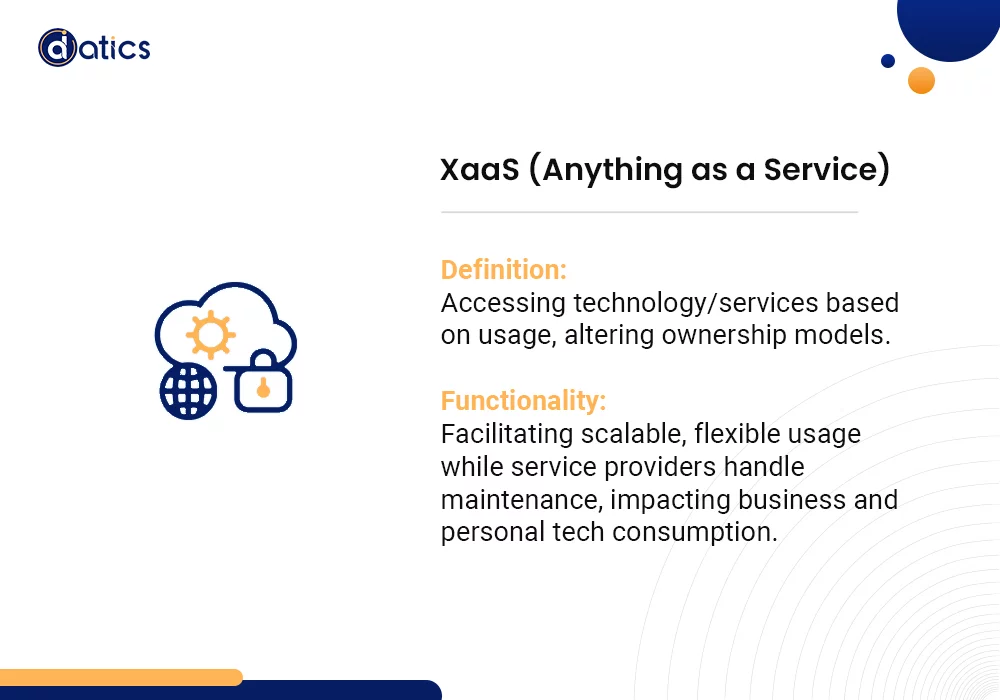
XaaS (Anything as a Service) means getting technology or services based on how much you use them. It brought in lots of popular “as a service” technologies, like SaaS (Software as a Service), DaaS (Device as a Service), and DCaaS (Data Center as a Service). In this setup, the provider owns the thing and takes care of tasks as part of a deal.
It lets users use tech without owning it, so they can adjust how much they use and let the provider handle maintenance. This range of tech terms (XaaS, SaaS, DaaS, DCaaS) has changed how businesses and people use tech, making it flexible, scalable, and cheaper in different fields.
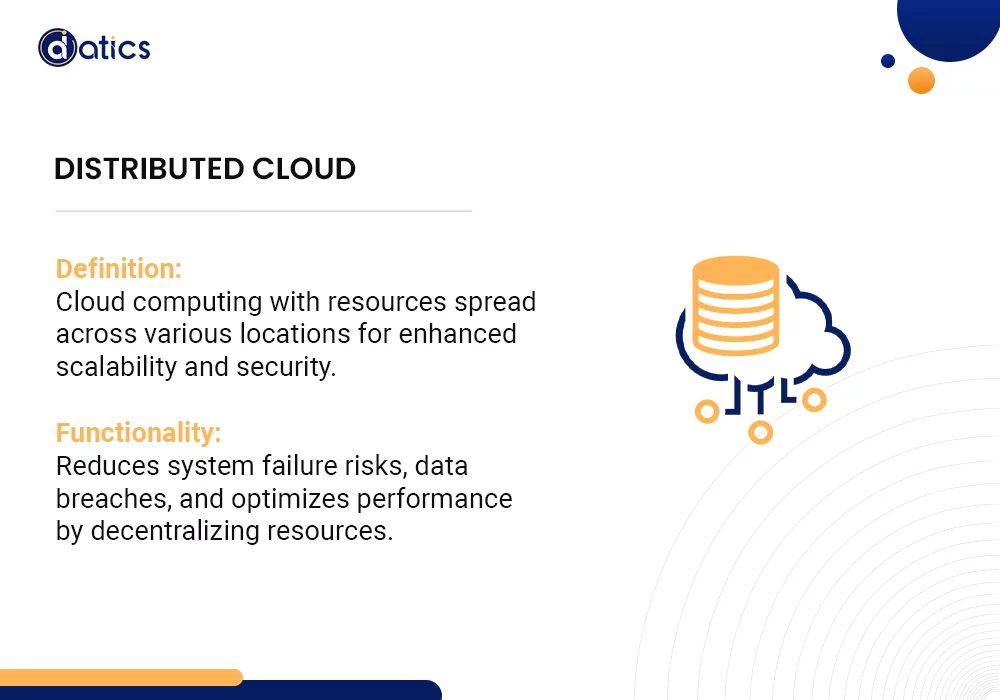
The distributed cloud is a form of cloud computing where data resides on remote servers accessed through the internet, not just on your personal device. It spreads resources across various locations, aiming to boost scalability, reliability, and security. By scattering these resources across different places, this cloud type ensures resilience against potential problems in a single area.
This not only handles larger workloads better but also reduces the chances of system failures. Additionally, this approach heightens security by lowering the risks of data breaches or localized issues. Ultimately, this distributed cloud design provides a robust structure, optimizing performance, reliability, and security to meet the evolving needs of modern data-driven tasks and software.

Generative Al refers to artificial intelligence (AI) algorithms that are used to generate new output based on patterns from data they have been trained on. Generative Al has a wide range of applications, including image, video, text, and music generation. One example is OpenAI ChatGPT.
Utilizing machine learning, this tech term delves into vast datasets, capturing subtle connections and complexities within the information. This thorough understanding enables generative AI algorithms to create content that reflects the inherent patterns and styles found in the data they’ve learned from. For example, when generating images, these algorithms craft new visuals akin to those in the training data, yet completely distinct.
Congratulations! We’ve decoded various tech terms, from ‘Edge Computing’ to ‘Metaverse’ and the next time these terms come up in a conversation, you won’t be staring blankly into space.
It’s important to remember that embracing technology begins by breaking down these concepts into simpler, understandable parts.
Stay tuned for part 2!
Share the details of your project – like scope, timeframe, or business challenges. Our team will carefully review them and get back to you with the next steps!

© 2024 | All Right Revered.
This guide is your roadmap to success! We’ll walk you, step-by-step, through the process of transforming your vision into a project with a clear purpose, target audience, and winning features.